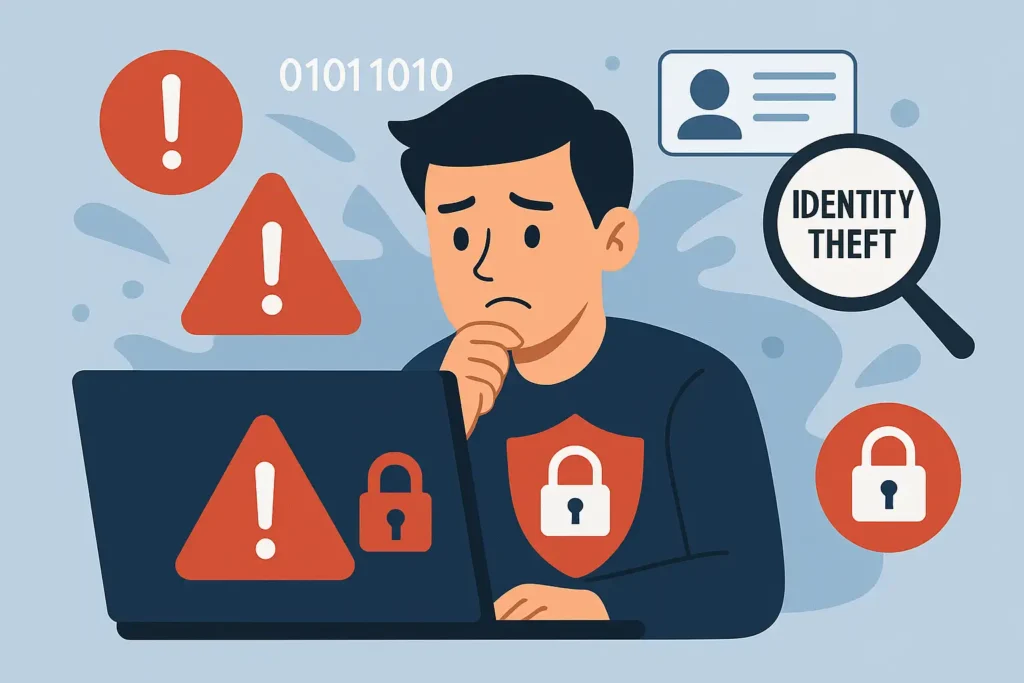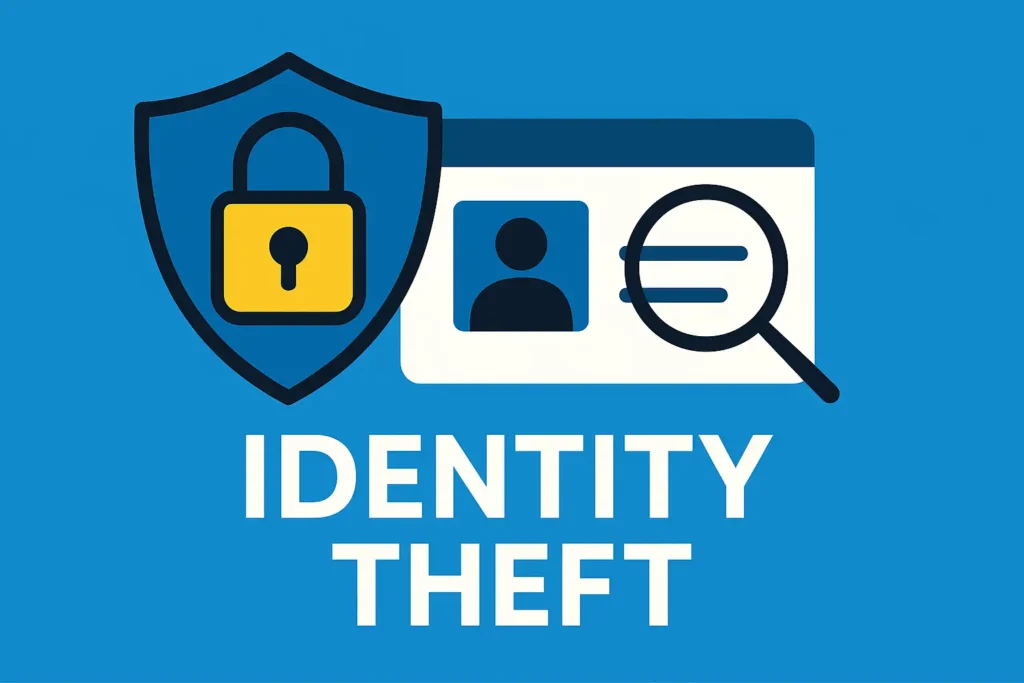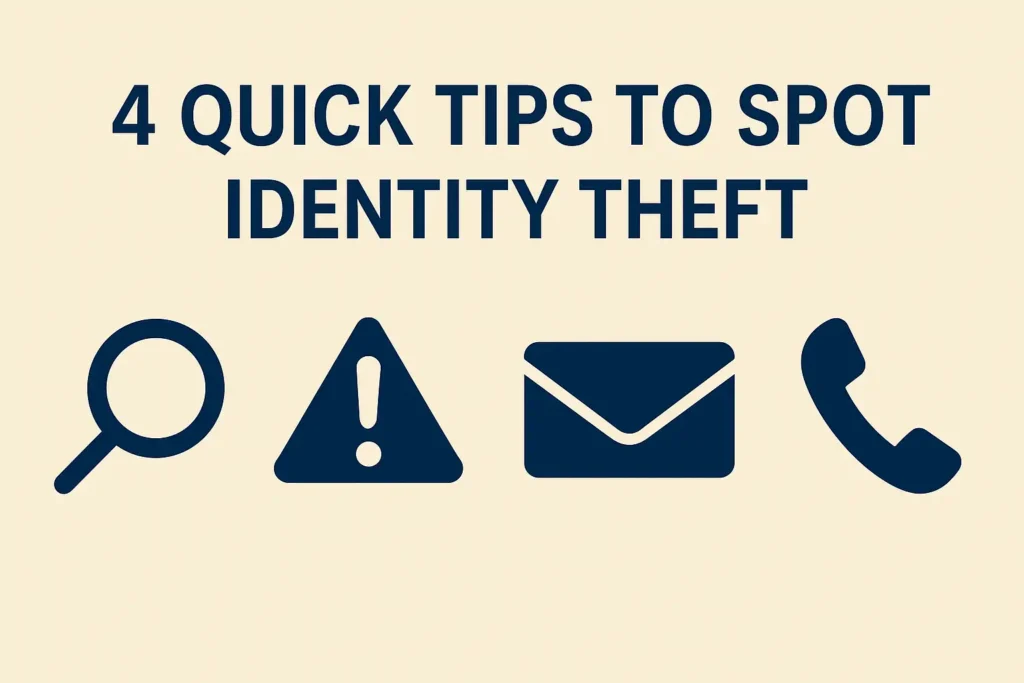Identity theft is a serious crime that can have devastating consequences for its victims. Unfortunately, it’s also a relatively easy offence to commit. Knowing how to spot the signs of identity theft can protect you from becoming a victim.
Some facts and data
The FBI’s Internet Crime Report 2021 tells us that the public reported over 840,000 instances of cybercrime in that year.
Another report suggests that of all the cybercrime reports made in 2021, 25% of them were associated with identity theft.

Identity theft can affect many areas of your life. From your finances to your employment, the impact of someone impersonating you can travel further than you ever expected.
To help you boost your vigilance online, we have included the 4 helpful signs to watch out for. If you experience any of them, it could be time to launch a more detailed inspection of your online accounts.
Signs of Identity Theft
Unrequested Verification Codes
Some sites and applications use features that can increase the security of your accounts. In case you forget your password, a specifically generated code can be sent out to you as part of the reset process.
If you have not requested one of these codes, but you received one anyway, this could be a sign that someone is trying to access your profile. This could be true for a number of applications, from online banking to social media platforms such as LinkedIn, Facebook or Instagram.
The best step you can take in this instance is to try to log into the account you have been sent a code and change your password as soon as possible. If you find you can no longer access your account, then contact the administrators of the platform to report the hack.

Missing Identification Documents
It can be easy to focus on digitally-based threats and forget that you are carrying around hard copies of your personal information with you. It’s important that you keep them secure and notice when they are unaccounted for.
For instance, it’s not uncommon to carry around your:
- Drivers license
- Your passport
- Debit/credit cards
- Your Social Security card.
Skilled thieves can steal them and use them to target you digitally. Some of these items do not always need to be carried.
To give an example, you sometimes only need to carry your passport when travelling between national borders. Having it on you to use as an ID in other scenarios will only increase your chances of misplacing it or having it stolen.
Unknown Charges On Your Bank Statement
Taking control of your finances can be one of the strong signs of someone trying to get your identity details. Make sure you regularly check your online banking apps to make sure you can identify the transition and all other activities.
If you don’t know or remember what a charge was for, then get in touch with your bank. It pays to be safe. If you don’t investigate, then someone else could be spending your money and preparing to steal your earnings from other cards as well.
Missing or Unexpected Mail
If you find that your physical mail is missing or getting strange letters, it can be a big indicator of identity theft. If you start receiving letters from banks or loan companies that you haven’t applied to, someone could access your finances in your name.
Additionally, you could be waiting for an important letter that never arrives. It could be that someone is taking mail from your mailbox or may even have redirected it to another address.
If you are expecting a delivery with important and personal information contained within, such as a new bank card, then its disappearance could be a clear sign that someone may be trying to steal your identity.
Get in touch with the organisation in question and see if they have sent out the mail you are waiting for.
Other Possible Signs Of Identity Theft
There are other clues to watch out for, such as:
- Issues with your credit report.
- Unusual phone calls, texts, and emails
- Logins from unfamiliar devices
Here are a few quick tips to help you stay safe

- Always guard your personal information carefully.
- Don’t share your Social Security number or other sensitive information with anyone who doesn’t need it.
- Use strong passwords and change them regularly.
- Monitor your credit report regularly for suspicious activity.
- Delete documents containing personal information before disposing of them.
- If something seems fishy, contact the authorities immediately.
As well as staying alert, installing a VPN on your devices could also mean your sensitive data is kept safe when online. Look into one today, and check out the Surfshark review page to see the benefits that a VPN can offer.
Conclusion
Identity theft can be a scary prospect, but by being alert, sensitive, and following some simple tips, you can help protect yourself from becoming a victim. Follow these tips to help keep your personal information safe and secure.
Frequently Asked Questions(FAQs)
What are the first signs of identity theft?
There are many signs of identity theft, but the most common include changes to your personal information, unauthorised charges on your credit or bank cards, and strange phone calls or emails. If you believe you may be a victim of identity theft, contact your credit card company or bank immediately to report the incident and obtain assistance protecting your account.
What are the types of theft?
-Financial Identity Theft
-Social Security Identity Theft
-Medical Identity Theft
-Synthetic Identity Theft
-Child Identity Theft